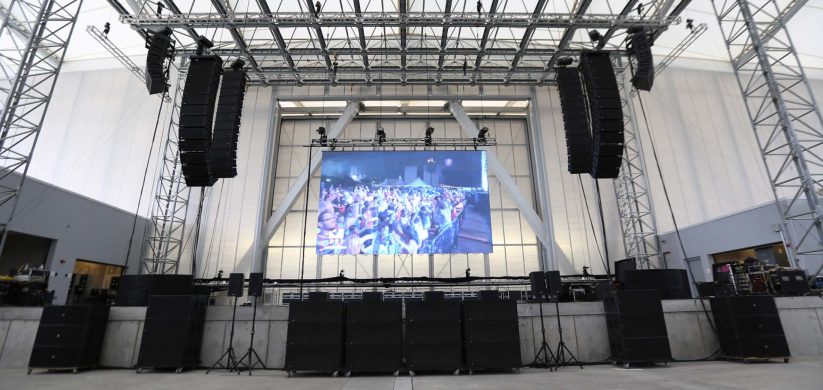Examining the Wide-ranging Connectivity Solutions Offered for LED Display Panels
Examining the Wide-ranging Connectivity Solutions Offered for LED Display Panels
Blog Article
LED wall units have gained traction for their capacity to deliver high-quality visuals in various settings, from professional environments to entertainment venues. One of the primary aspects of these systems is their interface capabilities, which allow users to connect them to multiple devices and systems. Understanding the diverse connectivity options supported for Light Emitting Diode wall panels is essential for maximizing their use and effectiveness. This discussion details these options, highlighting how they can cater to various needs and preferences.
One frequent connection method for Light Emitting Diode wall panels is HDMI. HDMI is broadly known for transmitting crisp video and audio signals between devices. This interface type is especially useful in commercial environments, such as conference rooms or classrooms, where visual content or video content are often displayed. By using digital connectors, users can seamlessly connect laptops, projectors, and streaming devices to Light Emitting Diode wall panels, ensuring a clear and dynamic presentation of information.
Another popular interface method is DisplayPort, which is similar to High-Definition Multimedia Interface but offers enhanced advantages. DisplayPort can support higher refresh rates and display outputs, making it an ideal choice for gaming or design-heavy applications. For those deploying LED wall panels in environments where performance is essential, such as competitive gaming venues or creative workspaces, DisplayPort can provide the necessary visual quality. Moreover, many contemporary computers and graphics cards include DisplayPort connections, making it a convenient solution for technology-oriented professionals.
In contrast to High-Definition Multimedia Interface and Display Port, wireless connectivity methods are becoming progressively common in Light Emitting Diode wall panel technology. Wireless interfaces allow operators to transmit content without the requirement for physical cables, enabling a streamlined and more adaptable setup. Technologies such as Wi-Fi and short-range communication allow users to link smartphones, tablets, and laptops seamlessly to LED wall panels without cumbersome wires. This convenience is especially beneficial in dynamic settings like exhibitions or live functions, where quick changes to displays are often needed.
For larger installations or more intricate setups, LAN integration through Ethernet is another reliable solution. Wired connections this website provide a stable and reliable way to connect multiple LED wall panels within a system. This approach is suitable for electronic display use cases found in retail centers or transport hubs, where multiple panels may need to present synchronized content across a wide area. By using Ethernet cables and network switches, users can ensure that all linked panels receive uniform updates and content seamlessly.
Lastly, it's important to consider the future of connectivity with technologies such as USB-C and Thunderbolt 3. These newer connection types offer increased data transfer speeds and versatility by allowing one cable to handle both power delivery and data transmission. As more systems incorporate these protocols, Light Visit Website Emitting Diode wall panels equipped with Type-C ports will likely become more common. This evolution in connectivity not only improves the capabilities of Luminescent Diode wall panels but also aligns with the growing trend of minimalism in technology setups by reducing the number of cables required.
In summary, examining the diverse connectivity options available for LED wall panels uncovers many possibilities for operators across multiple industries. From conventional approaches like High-Definition Multimedia Interface and Display Port to contemporary cordless solutions and network connections, each option serves unique purposes tailored to distinct needs. Furthermore, next-gen technologies like Universal Serial Bus-C offer further developments in how users interact with LED wall panels. By understanding these connectivity choices, individuals can make strategic selections that enhance their overall experience with these versatile display tools.